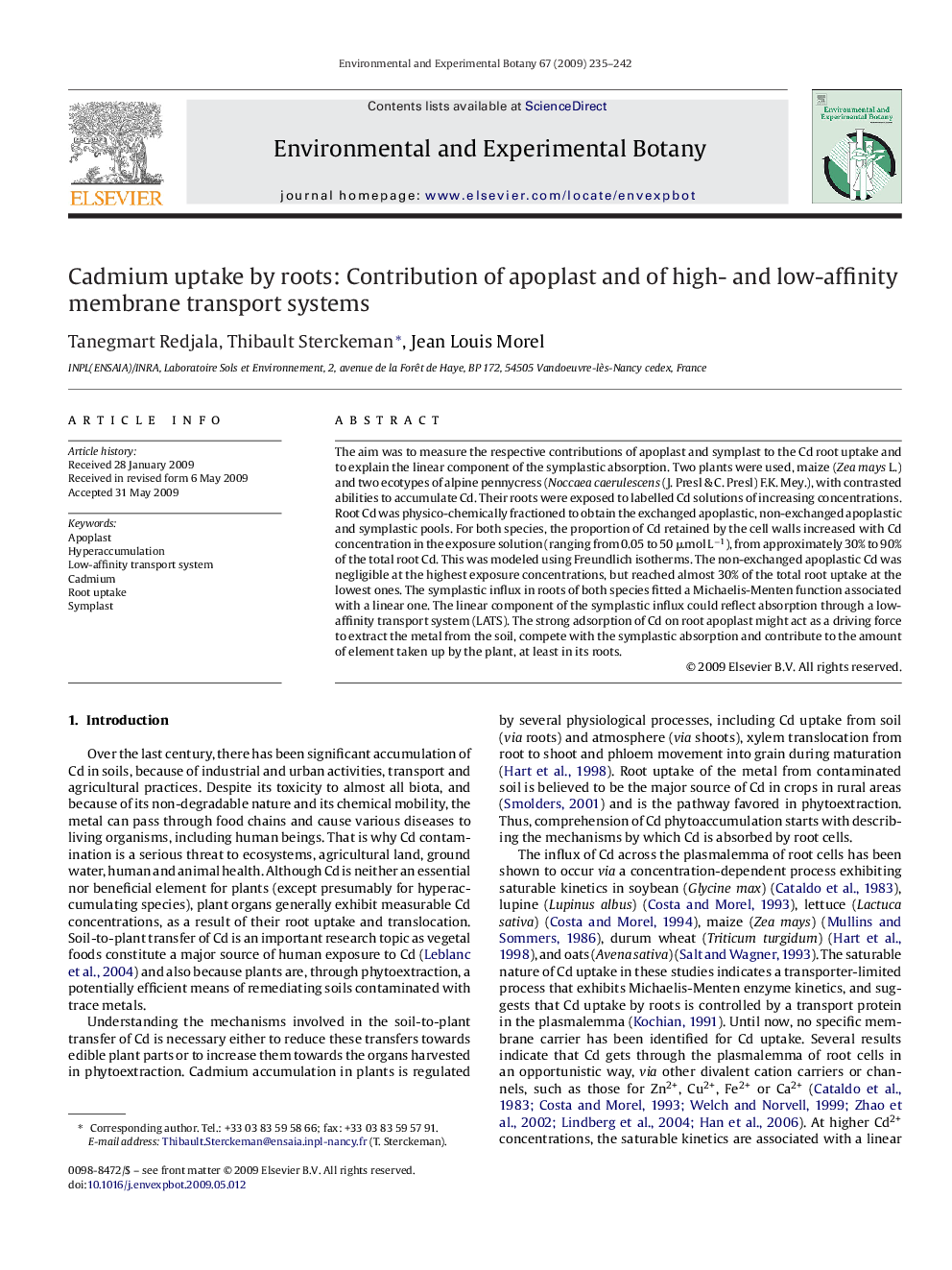| Article ID | Journal | Published Year | Pages | File Type |
|---|---|---|---|---|
| 4555057 | Environmental and Experimental Botany | 2009 | 8 Pages |
The aim was to measure the respective contributions of apoplast and symplast to the Cd root uptake and to explain the linear component of the symplastic absorption. Two plants were used, maize (Zea mays L.) and two ecotypes of alpine pennycress (Noccaea caerulescens (J. Presl & C. Presl) F.K. Mey.), with contrasted abilities to accumulate Cd. Their roots were exposed to labelled Cd solutions of increasing concentrations. Root Cd was physico-chemically fractioned to obtain the exchanged apoplastic, non-exchanged apoplastic and symplastic pools. For both species, the proportion of Cd retained by the cell walls increased with Cd concentration in the exposure solution (ranging from 0.05 to 50 μmol L−1), from approximately 30% to 90% of the total root Cd. This was modeled using Freundlich isotherms. The non-exchanged apoplastic Cd was negligible at the highest exposure concentrations, but reached almost 30% of the total root uptake at the lowest ones. The symplastic influx in roots of both species fitted a Michaelis-Menten function associated with a linear one. The linear component of the symplastic influx could reflect absorption through a low-affinity transport system (LATS). The strong adsorption of Cd on root apoplast might act as a driving force to extract the metal from the soil, compete with the symplastic absorption and contribute to the amount of element taken up by the plant, at least in its roots.
